What's in store for the mannequin industry ?
By Satarupa Chakraborty | March 08, 2019
With constant competition from Chinese imports and the high level of fragmentation, India’s mannequin industry faces a host of challenges. But there are also enough opportunities to grow, if you know where to look. VM&RD presents a bird’s eye view of the challenges and the scope for growth in the mannequin business.
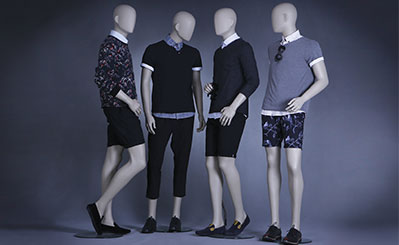 However headless, however identical and however silent, mannequins are a ubiquitous presence in the Indian brick and mortar retail space. India’s leading large-format retailers have made enough store space to accommodate at least 50 mannequins per store, which goes up to 150 per store, (VMRD estimates) depending upon the store size.
However headless, however identical and however silent, mannequins are a ubiquitous presence in the Indian brick and mortar retail space. India’s leading large-format retailers have made enough store space to accommodate at least 50 mannequins per store, which goes up to 150 per store, (VMRD estimates) depending upon the store size.
While luxury brands are opting for a more minimalistic approach, the mono brand stores spanning around 500-1000 sq ft each, are using 8-10 mannequins per store, windows and in-store VM put together (VMRD estimates). Interestingly, almost all leading retail brands also agree that garments on mannequins sell much faster, almost 40-50% higher than in-store merchandises, prompting them 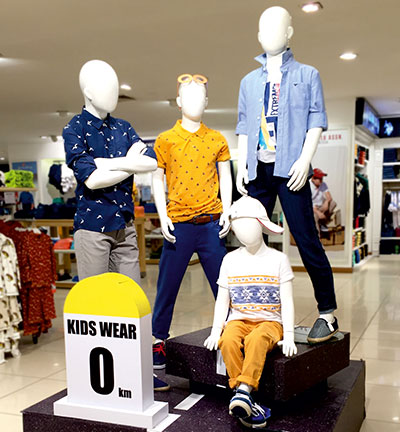 to increase the number of mannequins per store. All of this should mean a rosy future for the mannequin industry. Well in reality, India’s mannequin market is far from catching up with the global market, which is estimated to be $ 8.5 to 9.8 billion (Industry Report)
to increase the number of mannequins per store. All of this should mean a rosy future for the mannequin industry. Well in reality, India’s mannequin market is far from catching up with the global market, which is estimated to be $ 8.5 to 9.8 billion (Industry Report)
The industry challenges point to many aspects, some of which can also be converted into opportunities. Here’s a look.
Tapping the regional/tier II- tier III markets
The growth of Indian mannequin industry (organized players) is on an average a healthy 20%, owing to widespread fashion consumption that goes beyond the metro cities. However, this also means that out of all retail service providers, mannequins have the most fragmented market and a huge penetration of unorganized players. A survey by VM&RD among 17 organized mannequin players in the country in 2017 showed that each one’s turnover doesn’t cross more than a modest Rs 4 crore.
But the fact is that even amidst the competition from the unorganized segment, only about 10% of each of player’s turnover 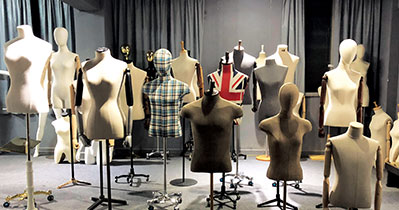 comes from the national retail players, while the rest is from the regional or unorganized retailers. As Ravi Verma, CEO, Clone Mannequins, says, “B & C grade cities are very promising markets for us today. Although based out of small towns, they have grown substantially in the last 20 years. Interestingly, because they have seen the shortfalls of bad products, they are now steadily turning to good products, opening a huge market for organized mannequin suppliers in the country like us.”
comes from the national retail players, while the rest is from the regional or unorganized retailers. As Ravi Verma, CEO, Clone Mannequins, says, “B & C grade cities are very promising markets for us today. Although based out of small towns, they have grown substantially in the last 20 years. Interestingly, because they have seen the shortfalls of bad products, they are now steadily turning to good products, opening a huge market for organized mannequin suppliers in the country like us.”
So this means that there is a huge untapped regional market, which despite the presence of unorganized mannequin traders, is 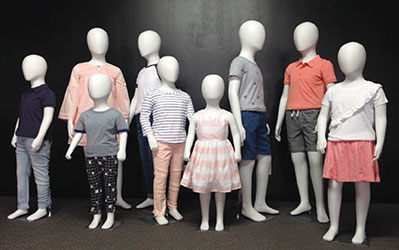 slowly but steadily turning to quality mannequins and visual merchandising.
slowly but steadily turning to quality mannequins and visual merchandising.
Working around the pricing challenge
But like it happens in most other industries, the large presence of unorganized players also means a dilution in quality and therefore pricing. Beating this would require higher awareness and understanding on the part of the clients regarding the need for quality. Sanjay Gupta of Deeps Mannequins, whose 70% of client list consists of corporate retailers, explains in this context, “Think about this – the stand of each mannequin we manufacture weighs more than 5 kilos, whereas local players are making stands 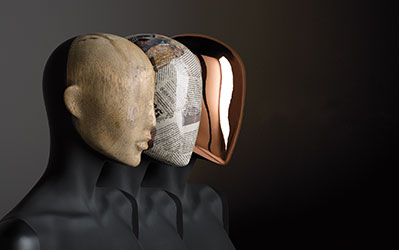 weighing as little as 3 kgs. Their manufacturing cost is inevitably 1/10 of ours so the end price is also 1/4th of what we offer. But what kind of quality and endurance can you expect?”
weighing as little as 3 kgs. Their manufacturing cost is inevitably 1/10 of ours so the end price is also 1/4th of what we offer. But what kind of quality and endurance can you expect?”
Beyond the focus on quality and the need to pay the right price for quality, there is also the question of scale. As Siby Varghese, Director, Tranz Mannequins, points out, “Internationally brands release budget for global and large-scale rollout, therefore the magnitude of business achieved from a single client is much higher for the European players. On the other hand, we get orders for hardly a handful of stores. This is because these brands are also not too sure of their long-term design. However, things are changing, as lot of such fiberglass companies are moving away 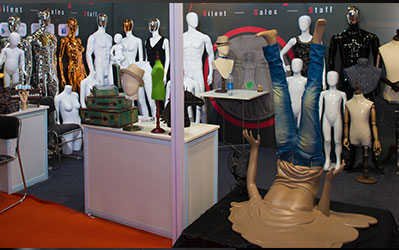 from China owing to the alarming scale of pollution. That leaves good opportunity to the Indian market.”
from China owing to the alarming scale of pollution. That leaves good opportunity to the Indian market.”
Indeed, India’s mid-sized and large mannequin manufacturers have upped their export quotient and it falls somewhere between 10% and 40% today. Charanjeet Singh, Director, Abstract Mannequins, whose exports account for about 20-25%, says , “Chinese import is decreasing every year, owing to several factors like import time (which is nothing less than 60-65 days), lack of after-sale supports etc. so, if you have just a handful of stores, you may import but beyond that importing poses challenge to fast scaling and rollout.”
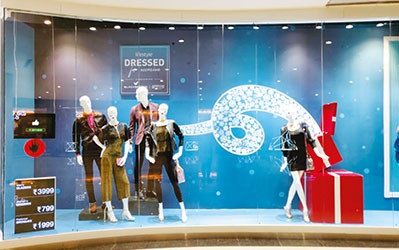 However, the question regarding the right choice of materials continues to loom large. Most mannequin makers in the country opt for fibres, although the popular choice of material worldwide is emerging to be plastic. And there is also the question of the environmental impact. Sanjeev Magon, CEO, Jambudweep Impex, points out in this regard, “Awareness in recyclable feature of mannequins is zilsch right now. People still pay for the look of the products, long-lasting feature and other qualities, but I am afraid that even mannequin manufactures are not thinking much in those lines. Therefore, we introduced LLDDE, which is basically food grade plastic, for manufacturing mannequins. And, on order to offer recyclable products, we are not sacrificing on the high-end features and look of the products either.”
However, the question regarding the right choice of materials continues to loom large. Most mannequin makers in the country opt for fibres, although the popular choice of material worldwide is emerging to be plastic. And there is also the question of the environmental impact. Sanjeev Magon, CEO, Jambudweep Impex, points out in this regard, “Awareness in recyclable feature of mannequins is zilsch right now. People still pay for the look of the products, long-lasting feature and other qualities, but I am afraid that even mannequin manufactures are not thinking much in those lines. Therefore, we introduced LLDDE, which is basically food grade plastic, for manufacturing mannequins. And, on order to offer recyclable products, we are not sacrificing on the high-end features and look of the products either.”
Environmental impact is also a reason why it is difficult to receive government subsidy to scale up the facilities as the process of manufacturing mannequins involves a lot of environmental impact. So this again brings up the role of reusable plastic as a better choice of materials. But plastic also comes with higher costs implications. Says K Karthikeyan, owner of a mid-sized mannequin manufacturing company, Max Mannequins, “Manufacturing plastic mannequins demand huge investment in terms of space and manpower for the handmade process. Therefore, most of the Indian manufacturers are now focusing on fibre products. In fact, to tap a bigger market, we are considering meaningful tie-ups with some Chinese companies.”
Collaborating – if you can’t beat them, join them
Karthikeyan’s view points to another trend, which may be a strategic way forward to beat the pricing challenge and it involves collaboration as the way forward. Interestingly, collaboration here includes tying up with competitors and the biggest competitors currently for the Indian mannequin industry are Chinese mannequin manufacturers.
As per industry estimates, there has been a 30% drop in orders in the last few years due to the onslaught from Chinese competitors. And although some manufacturers believe that imports from China have dropped substantially over the last few years, it’s evident that China has a much larger and more fragmented market. So even as low-quality low-priced products slowly lose ground, China’s high-end mannequin manufacturers seem to have gained a global market and are fast setting up production facilities for world mannequin leaders such as Handboodt, Tin Mannequins, Las Vegas Mannequins etc.
This has prompted Indian mannequin dealers too to look out for partnerships with Chinese companies directly or with the European leaders.
One of the leaders, Tranz Mannequins, which has been manufacturing fibre mannequins for decades until recently, has opened another company, Infinite, which will sell Chinese imports in the Indian market. Delhi-based Clone Mannequins has 6-7 co-selected vendors from all over the world to market in India. Deeps Mannequin, which has a full-fledged manufacturing unit in Delhi, works with Ahmedabad-based 3S Mannequins and Mumbai-based Global Mannequins to trade imports. Similarly, almost all organized players, combining the small and mid-sized firms, are now eyeing strategic partnerships with Chinese manufacturers.
Interestingly, while China offers scope for strategic partnerships, it also offers scope for improvisation to Indian manufacturers. Mahesh M Bhambani, owner of Bangalore-based Japan Mannequins, explains it further, “Most of the Chinese products are wrong in sizing, which is an important factor in a product like mannequin. Machine-made products are sprawling high in the China market and the chosen product is largely plastic. Whereas in India, we choose fibre and acrylic as materials and the repair cost is 1/of the plastic produces. Having said that, certain spares and dies are still not available in India, therefore, we depend on China in some ways.”
So it looks like partnerships and collaborations are here to stay for some more time.
Looking ahead – Winning global confidence
So with strategic collaborations and exploration of emerging regional markets in the country, are there good growth prospects for the Indian mannequin industry? Well, going by the confidence that world’s top fashion retailers have found in Indian mannequin manufacturers, the answer certainly seems to be yes. Brands like Zara & H&M, which have recently been in the news for high sales projections in their India business, have all switched to Indian mannequin firms for their 100% usage.
One major factor in favour of many Indian mannequin manufactures is the value they are offering in terms of offerings like guarantee, warranty, customization and after-sale services, which are not much available with imported goods.
A survey done by VMRD in 2017 on 17 organized mannequin players in fact showed that the average number of clients for each player is about 75 organized retailers and about 900+ unorganized ones. We also found that the average age of mannequin companies is over 14 years, with three of the oldest players being 30+ years old, making this an experienced industry. This also throws up a large opportunity for new players to enter bringing in newer technology, infrastructure and product designs.
So the question now is how soon will the industry move to the next level of growth?
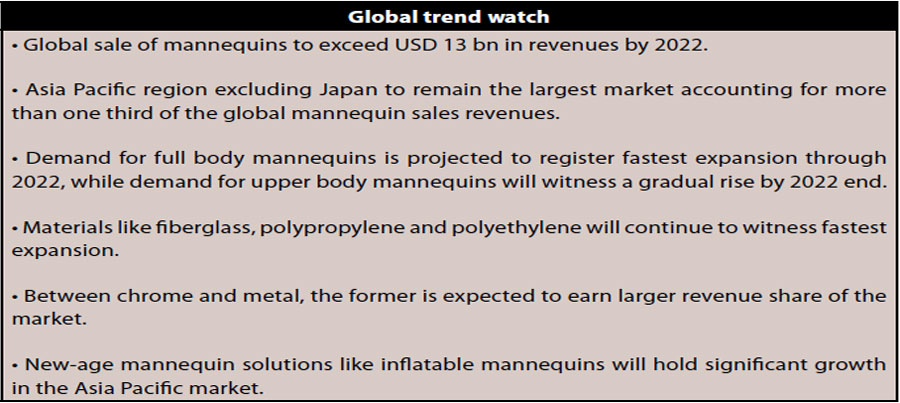






Comments